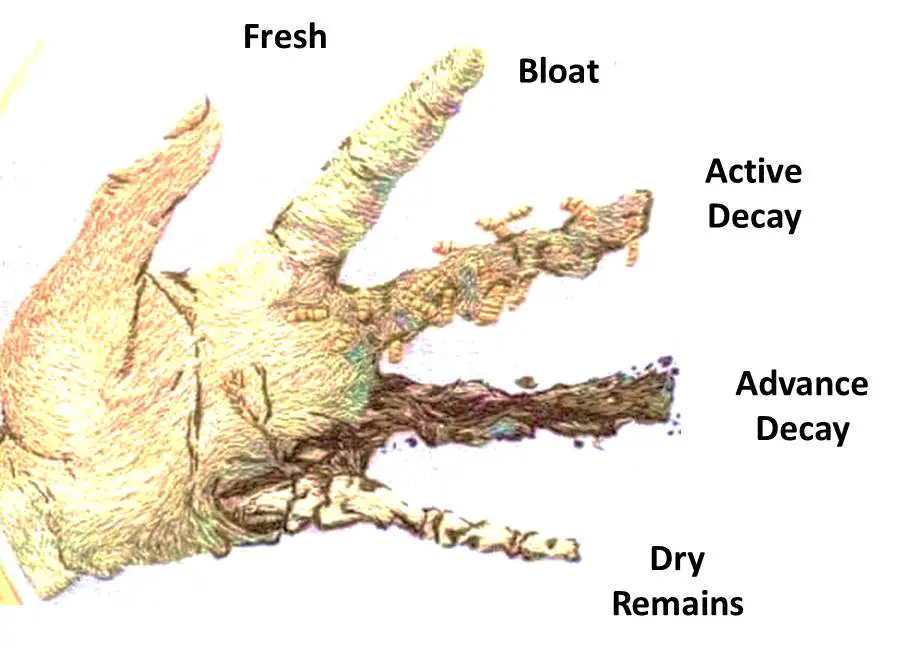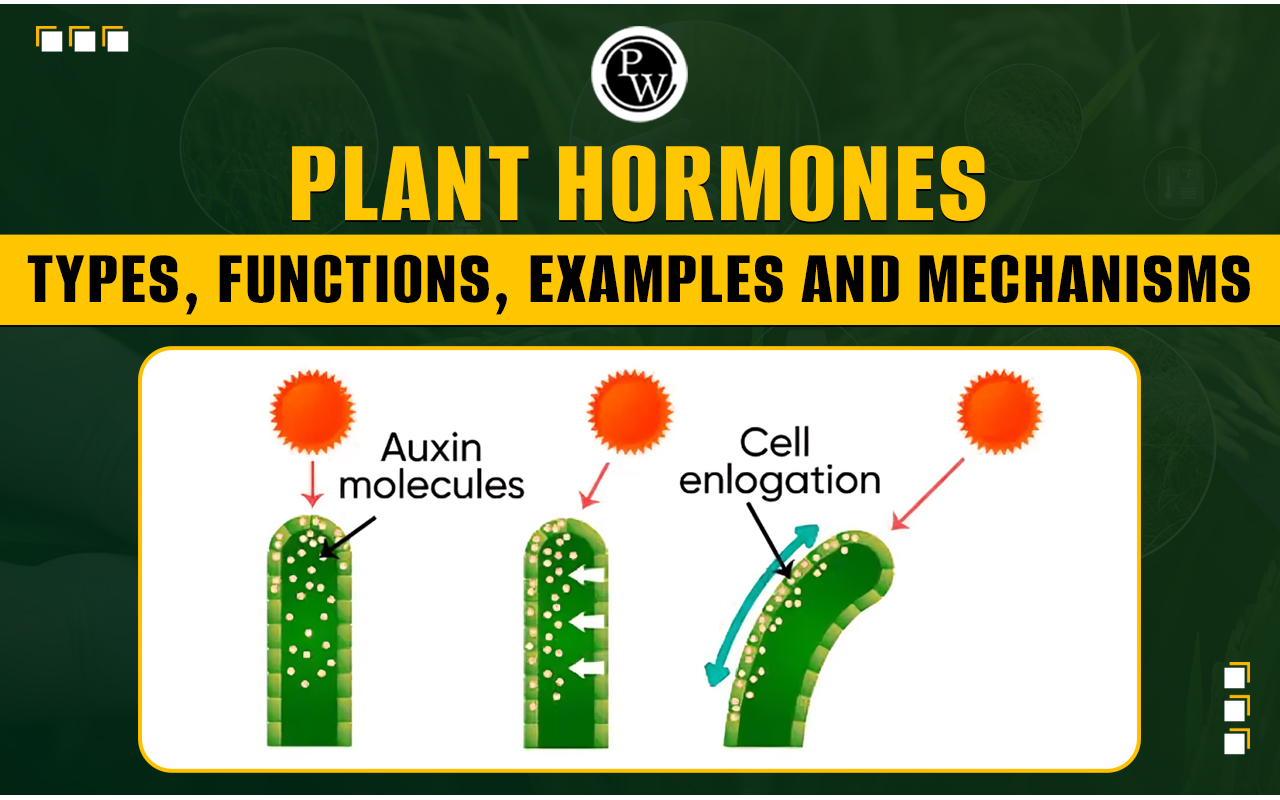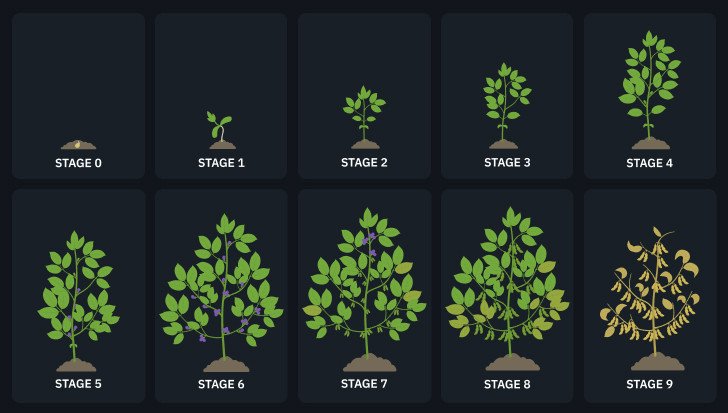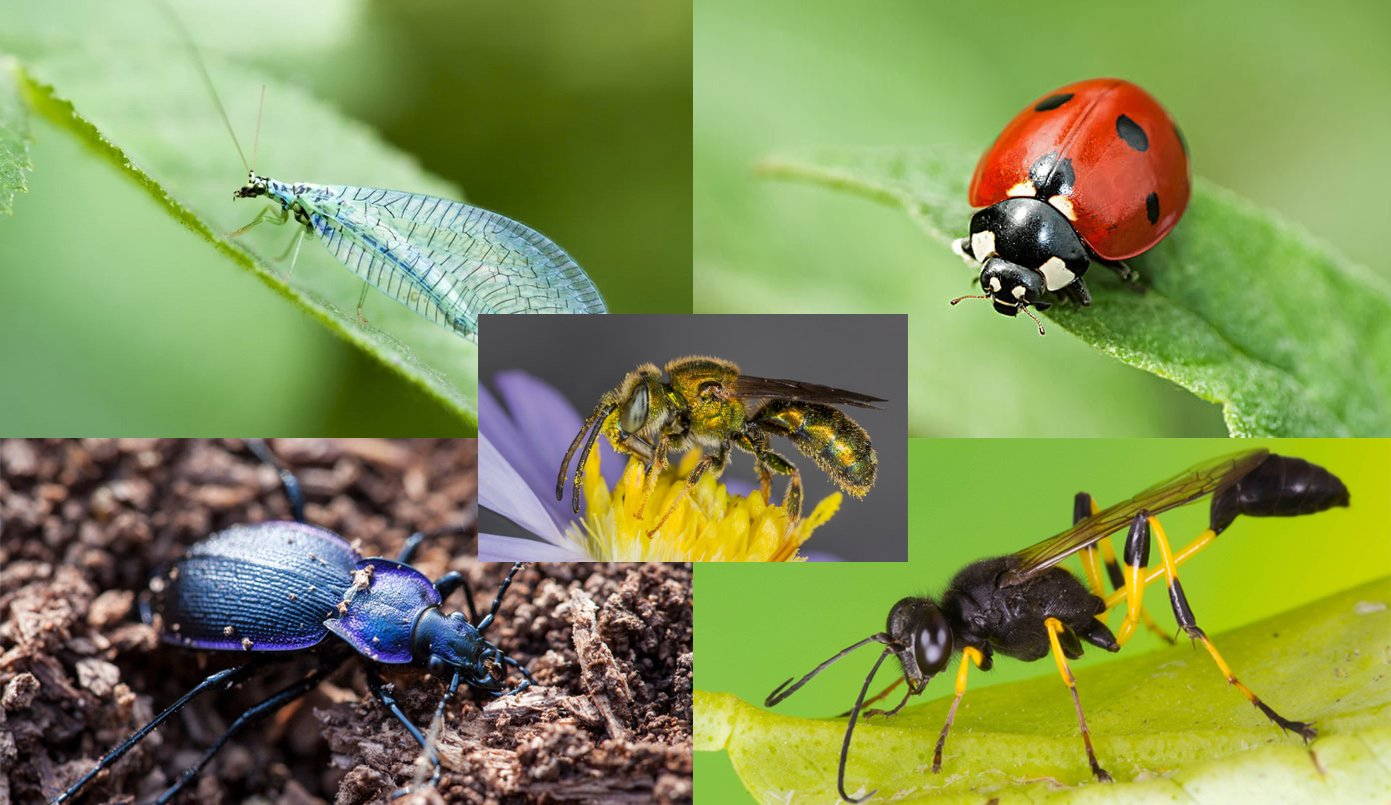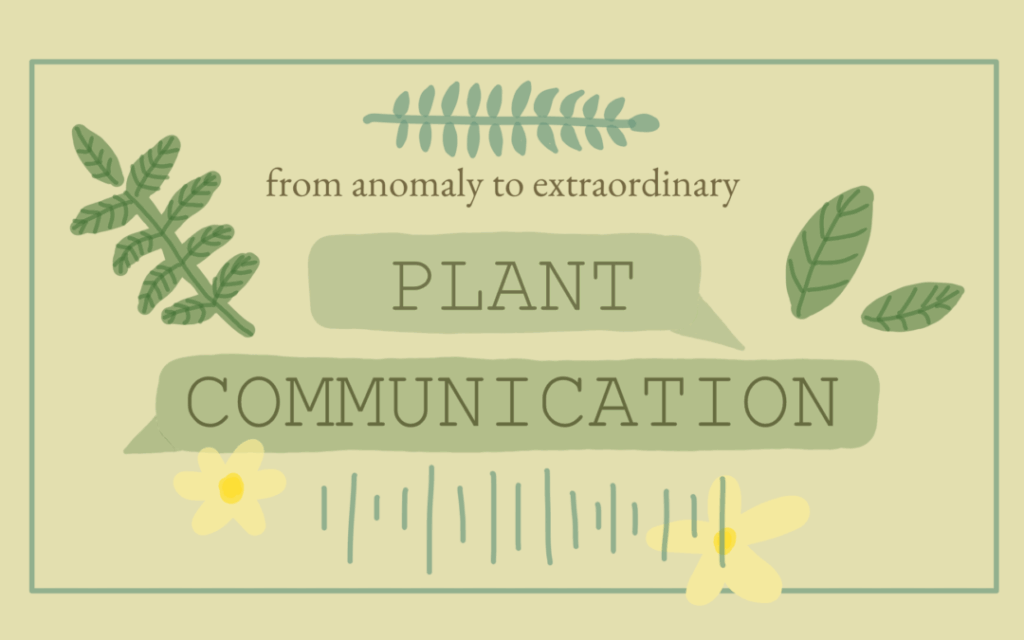
Introduction: The Silent Language of Plants
For centuries, we’ve perceived plants as passive organisms, quietly existing in the background of our bustling world. But what if I told you that beneath the surface, a complex and fascinating network of communication is constantly at play? Plant communication, a field that’s rapidly gaining traction in the scientific community, reveals that plants are far from silent. They engage in intricate dialogues with each other, with other organisms, and even with their environment. This communication isn’t through spoken words, of course, but through a sophisticated array of chemical signals, electrical impulses, and even airborne compounds. Understanding these signals is like learning a new language, one that unveils the hidden life of the plant kingdom.
This comprehensive guide will delve into the multifaceted world of plant communication, exploring the various methods plants use to interact, the purposes behind these interactions, and the implications for our understanding of ecology, agriculture, and even our own lives. We’ll uncover the latest research, examine the key players in this silent symphony, and consider the ethical considerations that arise as we decipher the secrets of plant intelligence.
Methods of Plant Communication
Plants employ a diverse range of communication methods, each tailored to specific situations and environments. These methods can be broadly categorized into:
- Chemical Signaling: This is perhaps the most well-studied form of plant communication. Plants release volatile organic compounds (VOCs) into the air, which can be detected by neighboring plants. These VOCs can act as warning signals, attract beneficial insects, or even deter herbivores.
- Root-to-Root Communication: Plants can also communicate through their roots, exchanging nutrients, water, and even alarm signals via mycorrhizal networks – symbiotic associations between plant roots and fungi.
- Electrical Signaling: Like animals, plants also use electrical signals to transmit information rapidly within their bodies. These signals can trigger defense responses or coordinate growth patterns.
- Visual Cues: While less direct, plants can also communicate through visual cues, such as changes in leaf color or flower patterns, which can attract pollinators or signal stress.
Chemical Signaling: The Language of Volatiles
Imagine a forest where trees can warn each other of impending danger. This is the reality of chemical signaling. When a plant is attacked by a herbivore, such as a caterpillar, it releases volatile organic compounds (VOCs) into the air. These VOCs aren’t just random byproducts; they’re carefully crafted messages. Neighboring plants, upon detecting these VOCs, can prime their own defenses, becoming more resistant to the same herbivore. This can involve producing toxins, attracting predatory insects that feed on the herbivores, or even altering their leaf texture to make them less palatable.
The specific blend of VOCs released varies depending on the plant species, the type of herbivore, and even the time of day. This suggests that plants are capable of sending highly specific messages, akin to using different words in a language. Researchers are working to decode these complex chemical signals, hoping to understand the full vocabulary of plant communication.
For instance, studies have shown that willow trees under attack by tent caterpillars release VOCs that signal to nearby willow trees to produce more phenolic compounds, making their leaves less palatable to the caterpillars. Similarly, tomato plants release VOCs that attract parasitic wasps, which lay their eggs inside the caterpillars, effectively controlling the herbivore population. These examples highlight the remarkable sophistication and ecological significance of chemical signaling.
Root-to-Root Communication: The Underground Network
Beneath the soil, a hidden world of interconnectedness exists. Plants aren’t isolated individuals; they’re part of a vast network of roots and fungi. Mycorrhizal networks, formed by the symbiotic association between plant roots and fungi, act as highways for the exchange of nutrients, water, and even information. These networks can connect plants of the same species, as well as plants of different species, creating a complex web of communication.
Through these networks, plants can share resources, such as carbon and phosphorus, helping each other to survive in nutrient-poor environments. They can also transmit alarm signals, warning neighboring plants of impending threats, such as drought or disease. This allows plants to coordinate their defenses and increase their chances of survival as a collective. The “wood wide web” is a term sometimes used to describe this, coined by Suzanne Simard, a pioneer in the field.
Research has shown that plants can even recognize their kin through root exudates. Plants grown in close proximity to their relatives are more likely to cooperate and share resources than plants grown near strangers. This suggests that plants have a sense of identity and can differentiate between kin and non-kin, further highlighting the complexity of plant social behavior.
Electrical Signaling: The Plant Nervous System?
While plants lack a central nervous system like animals, they do possess the ability to generate and transmit electrical signals. These signals, which travel through the plant’s vascular system, can trigger a variety of responses, including defense mechanisms, growth regulation, and even leaf movements.
When a plant is wounded or stressed, it can generate an electrical signal that travels rapidly throughout its body, alerting distant tissues to the impending danger. This signal can trigger the production of defensive compounds, such as toxins or proteinase inhibitors, which deter herbivores from feeding. Electrical signals can also play a role in coordinating growth patterns, ensuring that different parts of the plant develop in a coordinated manner.
The Venus flytrap, with its rapid leaf closure in response to touch, provides a dramatic example of electrical signaling in action. When an insect triggers the sensitive hairs inside the trap, it generates an electrical signal that causes the trap to snap shut in a fraction of a second. This remarkable feat of plant engineering demonstrates the power and speed of electrical communication in the plant kingdom.
Visual Cues: A Silent Symphony of Color and Form
While chemical, root-to-root, and electrical signals represent direct forms of communication, plants also utilize visual cues to convey information to other organisms. Changes in leaf color, flower patterns, and overall plant architecture can all serve as signals, attracting pollinators, deterring herbivores, or indicating stress levels.
The vibrant colors of flowers, for example, are designed to attract pollinators, such as bees, butterflies, and hummingbirds. The specific color and pattern of a flower can guide pollinators to the nectar and pollen, ensuring successful pollination. Similarly, changes in leaf color, such as the yellowing of leaves during autumn, can signal to herbivores that the plant is no longer a suitable food source. Plants under stress may also exhibit changes in their growth patterns, such as stunted growth or altered leaf orientation, which can serve as visual cues to other plants or animals.
Even the shape and size of a plant can communicate information. For example, plants in windy environments often exhibit a compact, wind-resistant growth form, which reduces the risk of damage. These visual cues, while often subtle, play an important role in plant interactions and ecosystem dynamics.
Purposes of Plant Communication
Plant communication serves a variety of purposes, all aimed at enhancing the plant’s survival and reproductive success. These purposes include:
- Defense against herbivores: Plants use chemical signals, electrical signals, and visual cues to deter herbivores from feeding on them.
- Attracting pollinators: Plants use visual cues, such as flower colors and patterns, to attract pollinators, ensuring successful pollination.
- Competition for resources: Plants can communicate with each other to compete for resources, such as water, nutrients, and sunlight.
- Cooperation and altruism: Plants can cooperate with each other, sharing resources and providing support to their neighbors.
- Warning of danger: Plants can warn each other of impending threats, such as drought, disease, or herbivore attacks.
Defense Against Herbivores: A Chemical Arms Race
Plants face constant pressure from herbivores, which seek to consume their leaves, stems, and roots. To defend themselves, plants have evolved a sophisticated arsenal of defense mechanisms, many of which involve communication. As previously mentioned, plants can release VOCs that attract predatory insects, produce toxins that deter herbivores, or alter their leaf texture to make them less palatable. This is an ongoing evolutionary arms race.
The production of these defensive compounds is often triggered by herbivore attack, demonstrating the plant’s ability to detect and respond to threats. Some plants can even differentiate between different types of herbivores and tailor their defenses accordingly. For example, a plant attacked by a caterpillar might release VOCs that attract parasitic wasps, while a plant attacked by a beetle might release VOCs that deter the beetle directly. This level of specificity highlights the remarkable complexity of plant defense strategies.
Furthermore, plants can communicate with each other to coordinate their defenses. When one plant is attacked, it can warn neighboring plants of the impending threat, allowing them to prime their own defenses in advance. This collective defense strategy can significantly reduce the overall damage caused by herbivores.
Attracting Pollinators: A Colorful Invitation
Many plants rely on pollinators, such as bees, butterflies, and hummingbirds, to transfer pollen from one flower to another, enabling sexual reproduction. To attract these pollinators, plants have evolved a variety of visual cues, such as flower colors, patterns, and scents. The specific combination of these cues is often tailored to attract specific types of pollinators.
For example, bees are attracted to flowers with bright colors, such as blue and yellow, and often have ultraviolet patterns that are invisible to the human eye. Butterflies are attracted to flowers with bright colors and sweet scents, while hummingbirds are attracted to flowers with red or orange colors and tubular shapes. By tailoring their visual and olfactory signals to attract specific pollinators, plants can increase their chances of successful pollination.
Plants can also communicate with pollinators through nectar guides, which are patterns on the flower petals that guide pollinators to the nectar and pollen. These guides can be visible to the human eye or only visible under ultraviolet light, depending on the pollinator’s visual capabilities. Nectar guides ensure that pollinators come into contact with the pollen and transfer it to other flowers.
Competition for Resources: A Silent Struggle
Plants compete with each other for limited resources, such as water, nutrients, and sunlight. This competition can be intense, especially in densely populated environments. Plants can communicate with each other to assess the availability of resources and adjust their growth patterns accordingly. For example, plants can detect the presence of neighboring plants through root exudates or changes in light quality.
If a plant detects that a neighboring plant is competing for resources, it may alter its growth patterns to maximize its access to those resources. This can involve growing taller to capture more sunlight, extending its roots to access more water and nutrients, or releasing chemicals that inhibit the growth of neighboring plants. This silent struggle for resources plays a crucial role in shaping plant communities.
Allelopathy, the chemical inhibition of one plant by another, is a particularly potent form of competition. Some plants release allelochemicals into the soil that suppress the growth of neighboring plants, giving the releasing plant a competitive advantage. This strategy can be particularly effective in environments where resources are scarce.
Cooperation and Altruism: A Helping Hand
While competition is a common feature of plant communities, plants can also cooperate with each other, sharing resources and providing support to their neighbors. This cooperation can take various forms, such as the sharing of nutrients through mycorrhizal networks or the provision of shade and shelter to smaller plants.
As previously mentioned, plants can share carbon and phosphorus through mycorrhizal networks, helping each other to survive in nutrient-poor environments. This cooperation can be particularly beneficial to seedlings, which often rely on the support of mature trees to access resources and establish themselves. Plants can also provide shade and shelter to smaller plants, protecting them from harsh sunlight and extreme temperatures.
The concept of plant altruism, where a plant sacrifices its own resources for the benefit of others, is a subject of ongoing debate. However, some studies have suggested that plants may exhibit altruistic behavior under certain circumstances. For example, a plant might share resources with its neighbors even if it means reducing its own growth rate. This altruistic behavior may be driven by kin selection, where plants are more likely to cooperate with their relatives.
Warning of Danger: A Collective Defense
Plants can warn each other of impending threats, such as drought, disease, or herbivore attacks. This warning allows neighboring plants to prepare themselves for the threat, increasing their chances of survival. As discussed earlier, plants can release VOCs that warn neighboring plants of herbivore attacks, triggering the production of defensive compounds.
Plants can also communicate about drought stress. Some plants emit airborne signals when they are experiencing water scarcity, alerting nearby plants to conserve water. This can help to prevent widespread damage during droughts.
In the event of disease outbreaks, plants can also communicate. Infected plants can release signals that trigger resistance in nearby plants, limiting the spread of the disease. This collective defense strategy is crucial for maintaining the health and stability of plant communities.
Implications of Plant Communication
The discovery of plant communication has profound implications for our understanding of ecology, agriculture, and even our own lives. By understanding how plants communicate, we can develop more sustainable agricultural practices, conserve biodiversity, and even learn valuable lessons about social behavior.
- Sustainable agriculture: Understanding plant communication can help us to develop more sustainable agricultural practices by reducing our reliance on pesticides and fertilizers.
- Biodiversity conservation: Understanding plant communication can help us to conserve biodiversity by protecting plant communities and their interactions.
- Social behavior: Studying plant communication can provide insights into the evolution of social behavior and the importance of cooperation.
Sustainable Agriculture: Harnessing Plant Intelligence
Conventional agriculture often relies heavily on pesticides and fertilizers to control pests and diseases and to provide plants with the nutrients they need. However, these practices can have negative impacts on the environment, such as polluting waterways, harming beneficial insects, and disrupting soil ecosystems. Understanding plant communication can help us to develop more sustainable agricultural practices that reduce our reliance on these harmful inputs.
For example, by understanding how plants communicate about herbivore attacks, we can develop strategies to enhance their natural defenses. This can involve planting companion crops that release VOCs that attract predatory insects or breeding plants that are more responsive to alarm signals. By harnessing the plant’s own intelligence, we can reduce our reliance on pesticides and create more resilient agricultural systems.
Similarly, by understanding how plants communicate about nutrient availability, we can optimize fertilizer use. This can involve using precision agriculture techniques to apply fertilizers only where they are needed or using cover crops to improve soil health and nutrient cycling. By working with the plant’s natural processes, we can reduce fertilizer runoff and improve the efficiency of nutrient use.
Biodiversity Conservation: Protecting Plant Communities
Plant communities are complex ecosystems that are essential for biodiversity. They provide habitat for a wide range of animals, insects, and microorganisms, and they play a crucial role in regulating water cycles, sequestering carbon, and maintaining soil health. Understanding plant communication can help us to conserve biodiversity by protecting plant communities and their interactions.
For example, by understanding how plants communicate with pollinators, we can protect pollinator populations by preserving their habitat and avoiding the use of pesticides that harm them. Similarly, by understanding how plants communicate with each other, we can protect plant communities from invasive species by promoting natural resistance and resilience.
Conserving biodiversity also involves protecting the mycorrhizal networks that connect plants underground. These networks are essential for nutrient cycling, water transport, and communication, and they are vulnerable to disturbance from agriculture, forestry, and other human activities. By promoting sustainable land management practices, we can protect these vital networks and ensure the health of plant communities.
Social Behavior: Lessons from the Plant Kingdom
The study of plant communication can provide valuable insights into the evolution of social behavior and the importance of cooperation. Plants, despite their apparent simplicity, exhibit a remarkable range of social behaviors, from sharing resources to warning each other of danger. By studying these behaviors, we can learn about the ecological and evolutionary forces that drive cooperation and altruism.
For example, the sharing of nutrients through mycorrhizal networks demonstrates the importance of cooperation in resource-limited environments. Plants that cooperate with each other are more likely to survive and reproduce than plants that compete. Similarly, the warning of danger through VOCs demonstrates the benefits of collective defense. Plants that warn each other of impending threats are more likely to avoid damage and survive.
These findings challenge our traditional view of plants as passive and individualistic organisms. They reveal that plants are active participants in complex social networks, and that their behavior is shaped by interactions with other organisms and the environment. By learning from the plant kingdom, we can gain a deeper understanding of the social dynamics that govern all life on Earth.
Ethical Considerations
As we delve deeper into the world of plant communication, we must also consider the ethical implications of our newfound knowledge. Do plants have rights? Should we treat them with more respect? These are complex questions that require careful consideration.
Some argue that plants, as living organisms, deserve moral consideration. They point to the fact that plants are capable of complex behaviors, such as communication and cooperation, and that they play a vital role in maintaining the health of the planet. Others argue that plants are simply resources to be used for human benefit. They argue that plants lack consciousness and the capacity for suffering, and therefore do not deserve moral consideration.
Ultimately, the ethical treatment of plants is a matter of personal and societal values. However, as we learn more about the complexity and intelligence of plants, it becomes increasingly difficult to justify treating them as mere objects. Perhaps, as we continue to unravel the secrets of plant communication, we will develop a greater appreciation for the plant kingdom and a more ethical approach to our relationship with it.
Conclusion: A New Perspective on the Plant Kingdom
Plant communication is a fascinating and rapidly evolving field that is transforming our understanding of the plant kingdom. Plants are not silent, passive organisms; they are active participants in complex social networks, communicating with each other, with other organisms, and with their environment. By understanding the various methods and purposes of plant communication, we can develop more sustainable agricultural practices, conserve biodiversity, and even learn valuable lessons about social behavior.
As we continue to unravel the secrets of plant communication, we are likely to discover even more surprising and remarkable aspects of plant intelligence. The plant kingdom is a vast and unexplored frontier, full of mysteries waiting to be uncovered. By embracing a new perspective on plants, we can unlock their potential to help us solve some of the world’s most pressing challenges, from food security to climate change.
So, the next time you walk through a forest or tend to your garden, take a moment to consider the silent symphony of communication that is constantly unfolding around you. Listen closely, and you might just begin to hear the whispers of the plant kingdom.
